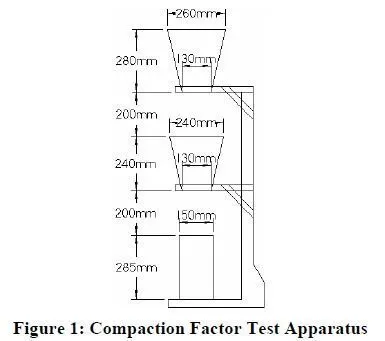The IBB rheometer (Beaupre and Mindness 1994; Ferraris and Brower 2001; Bartos, Sonebi, and Tamimi 2002) is a modification of the Tattersall two-point device. Although the IBB rheometer was originally developed to measure the rheology of wet-mix shotcrete, it has been successfully used on a wide range of concretes, from concretes with a slump of 20 mm to self-compacting concretes.
The device consists of a rotating impeller inserted into a fixed cylindrical container. When testing concrete, a fixed container with dimensions 360 mm by 250 mm is used. A smaller container with dimensions 230 mm by 180 mm can be used for mortars. A computer controlled DC motor turns an H-shaped impeller capable of rotating either in a planetary motion or in an axial rotation. For concrete, a 50 mm gap is left between the impeller and the sides and bottom of the container. When the mortar setup is used, a 25 mm gap exists between the impeller and the container. Based on these dimensions, the maximum aggregate size is 25 mm for concrete samples and 12 mm for mortar samples.
A load cell measures the reaction torque from the impeller while a tachometer measures the impellers rotation speed. Like the Tattersall two-point device, the linear relationship between torque and speed is defined by the slope h and the zero speed intercept g, which are related to plastic viscosity and yield stress, respectively. The values of g and h are calculated automatically by the computer and displayed at the end of the test. However, g is reported in terms of N-m (not the yield stress unit of Pa) and h is given in terms of N-m-s (not the plastic viscosity unit of Pa-s).
A portable version of the IBB has been developed. The device is based on the same design as the original IBB, just on a smaller scale. The portable IBB is constructed on an aluminum frame and includes wheels for easy transport.
Advantages:
The device measures yield stress and plastic viscosity.
The operation of the device is automated.
The device is applicable to a wide range of concrete workability.
The device is self-calibrating.
Disadvantages:
The results for yield stress and plastic viscosity are not given in terms of Pa and Pa-s, respectively.
The device, in its current form, is too large for field use. The volume of concrete required for the test is larger than for most other rheometers.
Like the Tattersall two-point device, segregation can occur over the duration of the test, even when the particular concrete mix would not be susceptible to segregation in actual placement conditions.
